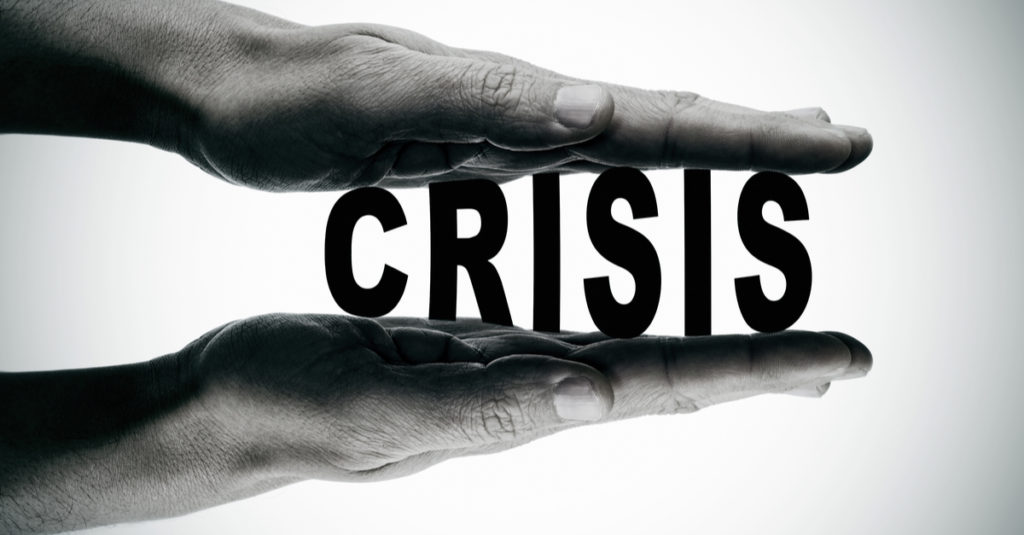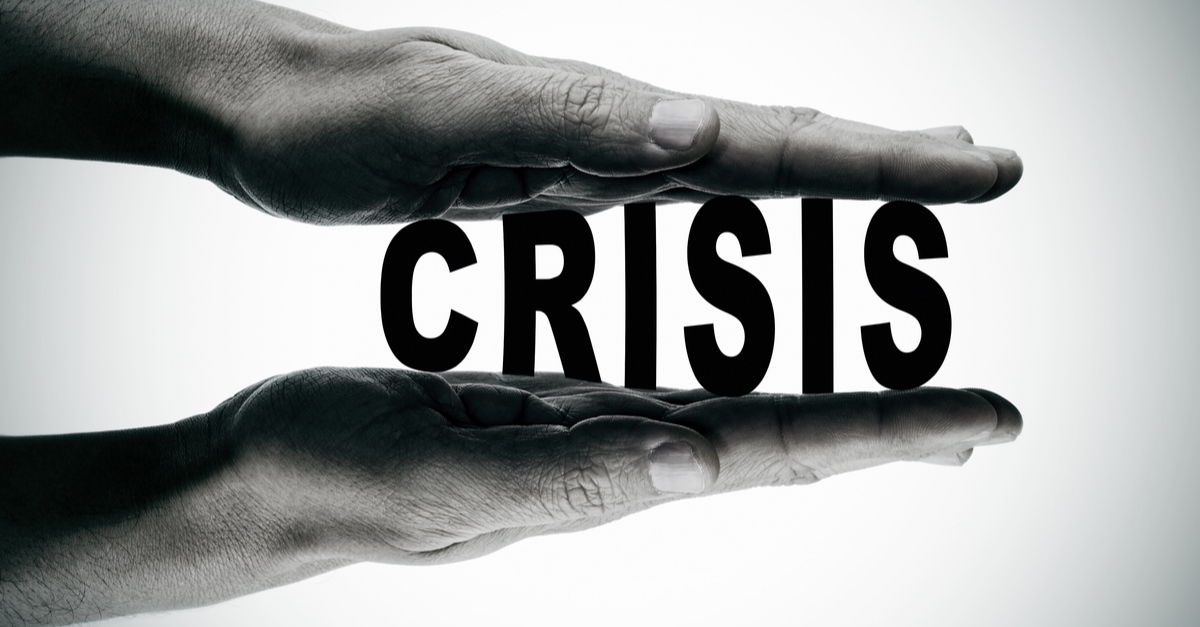
In times of crisis, ventures face several important challenges including the loss of customers and suppliers, the failure to get additional debt capacity, the inability to develop reliable cash-flow forecasts, the departure of top talents, the obsolescence of current business models, the increasing cost of loans and the steady increase in the level of receivables and inventories resulting in a severe drop in revenue, profitability and value creation.
It is critical for founders of Micro, Small and Medium-Sized Enterprises (MSMEs) in Lebanon to work closely with their leadership teams and advisors to develop, communicate and execute a clear plan that addresses the different dimensions on how a crisis will impact their employees, shareholders, customers, suppliers and the community.
Crisis Management Planning
Proper crisis planning is the foundation for sustainable value-creation during turbulent times like the ones that we have been exposed to over the past weeks in our country. MSMEs in Lebanon are particularly vulnerable to extended periods of crisis as the local banks have stopped extending loan facilities to most of them over the past several months in their drive to deleverage their balance sheets and improve their Capital Adequacy Ratios.
MSMEs face also other tough challenges including access to sound advisory and mentoring services, access to top talents and access to new markets. Around 97% (or 40,000 companies) of local Lebanese businesses are MSMEs and they are the pillar of the Lebanese economy as they provide job opportunities for more than 50% of employees in the private sector.
Crisis Management Steps
We advise every Lebanese MSME to integrate the following ten crisis management steps in effectively leading their companies through turbulent times. These simple steps are applicable to most MSMEs regardless of their size, field of activities and level of maturity.
1. Identify the key risk areas
It is important to identify, map and prioritize the key risk areas that your company is facing during crisis. This gap assessment exercise should be completed with several stakeholders including your leadership team, your shareholders and your advisors. The risk prioritization exercise will consider both the level of impact for each risk factor and the probability of the risk event taking place. The focus will be on the high impact and high probability risk areas.
2. Develop a clear and concise crisis plan
The Crisis Plan will build on your risk assessment framework and will include SMART objectives and actions. The plan will also map your key stakeholders (by levels of impact and influence), understand their needs and identify the best ways to address these needs. The stakeholders will include the staff, the shareholders, the suppliers, the customers, the public, the government and the media. The Crisis Plan needs to focus on the very short-term actions as we are in a survival mode.
3. Be transparent and available
The best way to stop the FUD (Fear, Uncertainty and Doubt) rumors to spread in your company is to be as transparent and available as possible with your key stakeholders, namely your staff, your customers, your suppliers and your shareholders. This open and direct attitude should be consistent and on-going across all channels from group meetings, social media, one-on-one discussions, and announcements.
4. Manage your cash-flow with all your passion
Your MSME will live or die depending on the quality of your cash-flow forecasts and your corrective actions to address the obvious funding gaps that will accelerate during moments of crisis. Special attention should be paid to negotiating better payment terms with your suppliers, encouraging your customers to pay you earlier (through prompt payment discounts), keeping your inventory levels to a minimum and optimizing your expense structure. You should also reach out to your external investors (banks and financial services companies) and your shareholders to identify the most effective ways to address future cash-flow gaps.
5. Bootstrap as a state of mind and re-invent your business model
You need to review and optimize your cost structure and take all the necessary measures to align your expense forecasts with your revenue projections. Typical actions will include delaying all non-critical hires, stopping all non-sales related expenses, reviewing your in-sourcing and out-sourcing balance, letting go of your non-performers (bottom 5% of your workforce), taking a salary cut or restructuring the payment of salaries over the next 6 to 12 months when the crisis will be over.
You can also consider shifting part of your cost structure from fixed to variable through to deployment of performance-based bonuses or commissions while reducing your level of fixed costs.
Crisis times are the best moments to re-assess and re-invent your business model while taking appropriate actions such as focusing on a digital model vs. more feet on the streets. Spend time with your team and advisors to reflect on your current business model, decide on the core vs. non-core activities and agree on the key pillars for transforming and re-inventing your company.
6. Diversify your customer base and discuss with your competitors.
The 2006 crisis in Lebanon was the best catalyst to force many Lebanese MSMEs to open branches across the MENA region resulting in a reduction of their concentration risk in the country and the development of new markets.
Product and Market Diversification is an effective way to reduce the impact of the crisis on your MSME. It is recommended to list all the growth opportunities available and prioritize them through screening factors such as the level of investment needed, the related financial returns, the strategic alignment with your existing business, the easy of execution and the level of synergies that can be generated. This is an important exercise that should be implemented in collaboration with the team, the board and selected advisors.
These turbulent times are also ideal to reach out to competitors and explore the possibilities of developing alliances and partnerships while identifying acquisition opportunities as company valuations can prove very attractive in situations of crisis.
7. Have your contingency plan ready
Develop different scenarios (conservative, realistic and aggressive) on the possible outcomes of the crisis and identify the actions that need to be implemented for each of those scenarios with clear ownership and timing. You need to have the courage to take tough decisions during crisis so as the ensure the long-term survival of the company and the quality of the partnerships with your key stakeholders.
8. Reach out to experts and advisors
It is important during crisis to select a limited number of trusted, creative and competent people who will provide you with different perspectives on how best to prioritize and address your most critical risk areas. Regular interaction with those experts will help you find the most suitable solutions for the challenges that you are facing. Berytech has a large portfolio of experts who have a track record in crisis management. These experts include lawyers, investment advisors, financial planners, coaches in risk management and mentors.
9. Communicate, communicate and communicate
Use all means possible to issue clear statements, update action plans, recognize top contributors, celebrate success stories and share new developments. It is also important to actively listen to your stakeholders’ main concerns (especially your staff and your customers) as it is one of the most effective ways to build trust. Effective communication to all your stakeholders as often, as clear and as consistent as possible, is one of your best success factors in turbulent times.
10. Strengthen your company culture through your positive outlook
Always maintain a positive, can-do attitude during moments of crisis as all your stakeholders will be looking at you as a role model and judge you on how best you live the company’s values during this transition period. Passion and faith are contagious so make sure that you have plenty of it to share. Create a commando spirit, share quick wins and don’t hesitate to reach out to your team members for special help and support.
Resilience and Flexibility
The above crisis management strategies are simple and clear, yet they provide an effective foundation to navigating your company through dynamic times of any sort.
A crisis that is poorly managed can destroy years of consistent value creation in a few weeks. A well planned, well communicated and well executed crisis management framework will validate that your company has solid foundations in place to address most of the challenges and risk factors that may develop in the future.
Make sure that you adapt your crisis management framework to the evolution of the situation as the goal posts will move continuously. Resilience and flexibility are the mothers of all virtues during turbulent times.
About the author

Constantin Salameh is Senior Coach and Investment Advisor with Berytech, providing financial and management advisory services to several companies in Lebanon. He has a 35-year track record in funding, developing and transforming corporations, SMEs and startups across the world.
He was previously CEO of HP Financial Services in EMEA and Asia Pacific and the CEO of global investment groups such as Safinvest, AMS Group and Al-Ghurair Investments. He joined Stanford’s Graduate School of Business SEED Program in 2015 and provides advisory services to social SMEs in both East and West Africa.
He has invested in several high potential and high social impact startups and SMEs in Africa, Lebanon and Europe, while providing them with mentoring, advisory and coaching services to scale effectively with a solid governance foundation. He sits on the board of more than 15 companies – active in the EMEA region in the healthcare, technology, renewable energy, FMCG, pharmaceuticals and FinTech sectors.
Constantin holds engineering degrees from King’s College London and MIT, together with an MBA from Stanford’s Graduate School of Business with a focus on international finance.








